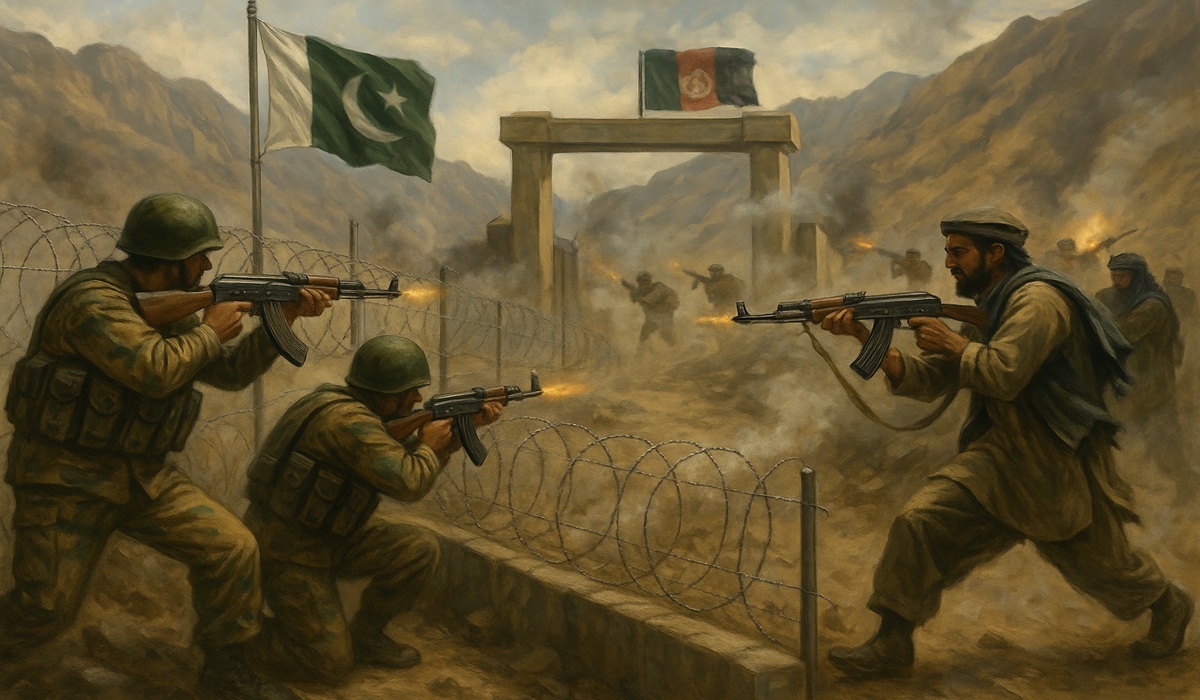In recent months, Pakistan’s western border has once again turned volatile. Cross-border attacks from Afghan territory into Khyber Pakhtunkhwa and Balochistan provinces have claimed the lives of dozens of Pakistani soldiers and civilians. These strikes, often carried out by the Tehreek-e-Taliban Pakistan (TTP) operating from sanctuaries inside Afghanistan, reveal a troubling pattern: Kabul’s growing defiance, the TTP’s resurgence, and India’s quiet but deliberate role in sustaining Pakistan’s insecurity. What makes this new wave of hostilities more complex is that Afghanistan’s aggression is not a random eruption of tribal violence—it is the outcome of overlapping political, ideological, and strategic calculations that expose deep cracks in the post-2021 regional order.
There are several intertwined reasons behind Afghanistan’s increasingly confrontational posture toward Pakistan.
First, the Taliban government in Kabul is struggling to consolidate legitimacy both domestically and internationally. Isolated from the global community and denied recognition, it seeks to project sovereignty by taking a tough stance against Pakistan. By framing border clashes as a “defense of Afghan territory,” the Taliban regime tries to rally nationalist sentiment, distracting its population from severe economic collapse and internal dissent. Confrontation with Pakistan becomes a political tool—a symbolic assertion of independence against a state long viewed by Afghan factions as intrusive or patronizing.
Second, ideological affinity between the Afghan Taliban and the TTP complicates any serious crackdown. Both movements share the same Deobandi roots, overlapping tribal linkages, and a worldview shaped by decades of jihadist struggle. For many Afghan commanders, the TTP are not terrorists but “brothers in faith” resisting the Pakistani state. This sympathy runs deep across the Taliban’s mid-level ranks, where enforcing a ban on the TTP would be seen as betraying ideological solidarity. Thus, even if Kabul’s top leadership issues assurances, operational compliance on the ground remains minimal.
Third, border tensions are also driven by Afghanistan’s resentment toward the Durand Line. Despite decades of history, Kabul still refuses to formally recognize this colonial-era boundary. Pakistan’s completion of the border fence—designed to curb illegal crossings and militant infiltration—is perceived in Kabul as an attempt to cement a division that many Afghans reject. Skirmishes often erupt when Afghan forces attempt to remove fencing or obstruct Pakistani patrols. In essence, these attacks are as much about territorial assertion as they are about ideological hostility.
Fourth, the TTP has exploited Afghanistan’s ungoverned spaces to rebuild its infrastructure. The withdrawal of U.S. forces left behind enormous caches of modern weapons, which the TTP acquired through black-market channels. Afghan territory now serves as a recruitment base, training ground, and logistical hub for cross-border terrorism. Kabul’s unwillingness—or inability—to dismantle these networks enables the TTP to strike Pakistan with renewed strength.
And finally, behind these tensions lurks a familiar actor: India. Deprived of its formal diplomatic presence in Kabul after 2021, India has adapted by cultivating covert channels with anti-Pakistan elements. Through remnants of its old intelligence networks and front organizations, New Delhi allegedly funds and advises militant factions, particularly the TTP and splintered Baloch insurgents. The objective is clear: to keep Pakistan embroiled in a two-front security quagmire, diverting its focus from Kashmir, weakening its economy, and sabotaging Chinese investments under the China-Pakistan Economic Corridor (CPEC). Pakistan’s initial reaction to Taliban provocations was restrained, shaped by a desire to maintain goodwill with Kabul and avoid destabilizing its western flank. Islamabad hoped that shared religious and cultural ties would encourage cooperation against the TTP. That optimism has faded.
In 2025, Islamabad adopted a tougher policy—conducting precision strikes on TTP hideouts inside Afghan territory, reinforcing border posts, and tightening control over Afghan transit trade. The government has also moved to repatriate undocumented Afghan refugees, many of whom have been exploited as logistical facilitators by militant networks. While these measures drew criticism from human rights groups, they reflect Pakistan’s legitimate sovereign right to secure its borders. Diplomatically, Pakistan continues to engage Taliban through back-channel talks and regional forums, urging them to honor commitments made under Doha framework. Yet, without tangible pressure, persuasion alone will not change Kabul’s calculus. Islamabad must now pursue a dual-track strategy: dialogue coupled with deterrence. Afghanistan must understand that friendship cannot coexist with cross-border terrorism.
The Pakistan–Afghanistan standoff is not a bilateral dispute—it is a tremor shaking the entire region. For China, persistent insecurity along Pakistan’s western belt threatens CPEC’s western route, a vital component of Beijing’s Belt and Road Initiative. Chinese engineers and workers have already faced security threats in Balochistan, and continued instability could erode China’s confidence, slowing future investment. For Iran, instability along its eastern border complicates its own internal security challenges. Tehran fears that extremist groups could spill into Sistan-Balochistan, already a hotspot of ethnic unrest. A prolonged Pakistan –Afghanistan conflict would force Iran to harden its borders, straining humanitarian and trade routes vital for the region’s economy.
For Central Asia, the risk of jihadist infiltration is growing. Countries like Uzbekistan and Tajikistan, already wary of the Islamic State’s Khorasan branch (IS-K), view the Pakistan-Afghanistan conflict as a trigger for a new wave of extremism that could destabilize their fragile borders. For India, the situation offers strategic dividends. A Pakistan distracted by western militancy becomes less assertive on Kashmir and more vulnerable economically. New Delhi’s outreach to Kabul—under the banner of “humanitarian engagement”—should thus be viewed as a tactical maneuver to maintain leverage in a theater it once dominated. For the West, the crisis undermines its own counterterrorism agenda. The resurgence of the TTP and other militant networks exposes the failure of the post-withdrawal security order in Afghanistan. Washington and Brussels, preoccupied with Ukraine and the Indo-Pacific, risk ignoring a ticking bomb in South Asia—one that could reignite transnational terrorism if left unchecked.
Kabul must choose between partnership and proxy warfare. Shielding the TTP may serve short-term domestic politics, but it will condemn Afghanistan to perpetual isolation and economic ruin. For Pakistan, strategic patience must now evolve into strategic clarity. Islamabad should continue exposing India’s covert meddling, engage regional partners like China, Iran, and Russia for coordinated border security, and treat Kabul as a sovereign but accountable neighbor. Peace in South Asia will remain elusive as long as Afghanistan exports violence and India fuels it. The choice before Kabul is simple: build bridges with Pakistan—or watch the border become a line of endless fire.









